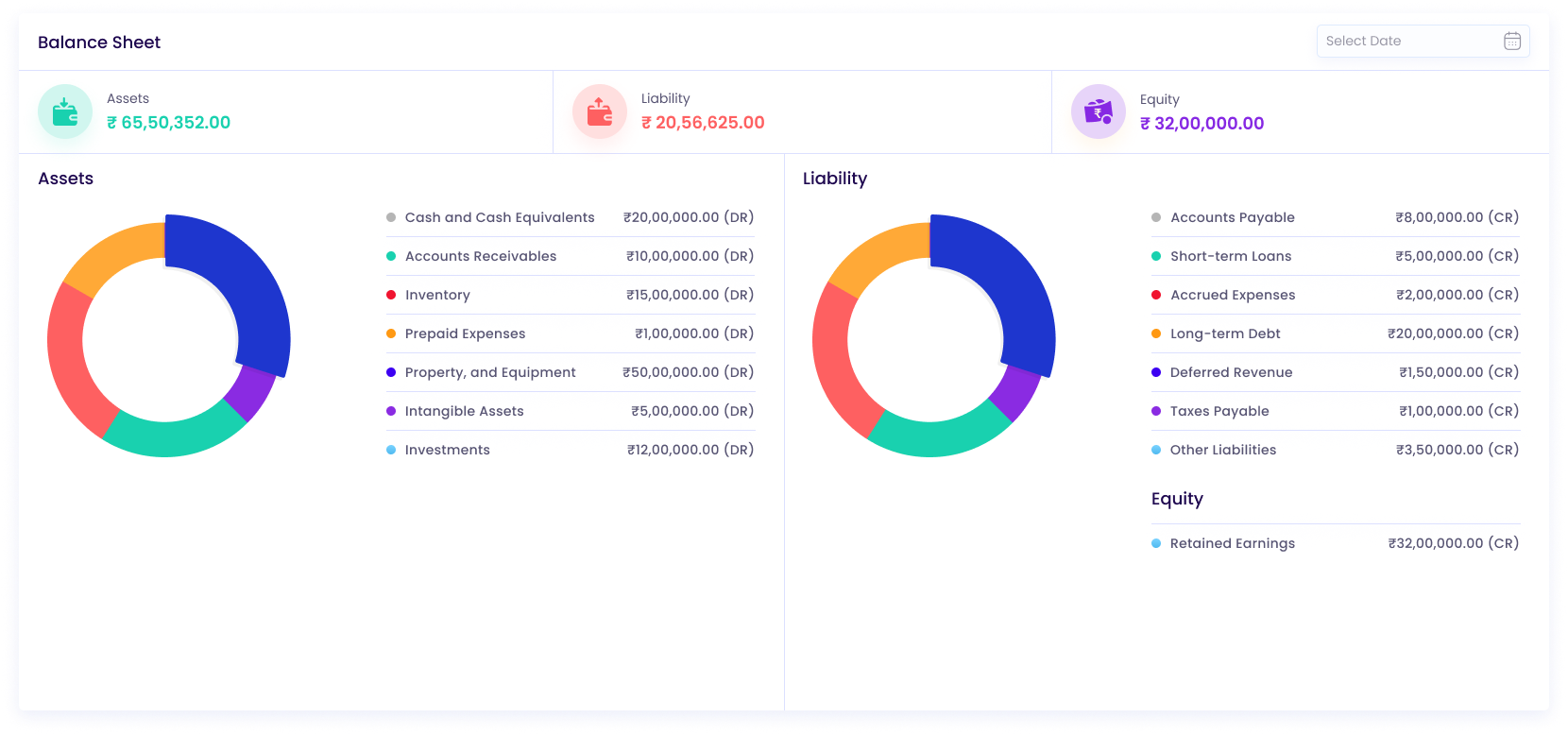Balance Sheet
A Balance Sheet is a fundamental financial statement that provides a snapshot of a company's financial position at a specific point in time. It is a critical tool for both internal management and external stakeholders, such as investors and creditors, to assess the financial health and stability of a business.
How to check Balance Sheet Report.
- Go to the Reports menu and click on Balance Sheet.
- The Balance Sheet Dashboard will open. You can check a specific month's data by selecting the date range located at the top right of the dashboard.
Components of a Balance Sheet:
A Balance Sheet is divided into three main sections:
- Assets -These are resources owned by the company that are expected to provide future economic benefits. Assets are typically categorized into:
- Current Assets -Cash and other assets that are expected to be converted into cash or used up within one year, such as inventory, accounts receivable, and short-term investments.
- Non-Current Assets -Long-term investments and property, plant, and equipment (PP&E), including intangible assets like patents and goodwill.
- Liabilities -These are obligations the company owes to outside parties. Liabilities are also divided into:
- Current Liabilities -Debts or obligations that are due within one year, such as accounts payable, short-term loans, and other accrued expenses.
- Non-Current Liabilities -Long-term debts and other obligations that are due beyond one year, including bonds payable and long-term leases.
- Equity -This represents the owners' residual interest in the assets of the company after deducting liabilities. Equity includes:
- Share Capital -Funds raised by issuing shares.
- Retained Earnings - Profits that have been reinvested in the business rather than distributed to shareholders.
- Other Comprehensive Income - Items not included in the net income, such as unrealized gains or losses on investments.

Balance Sheet
Updated 7 months ago